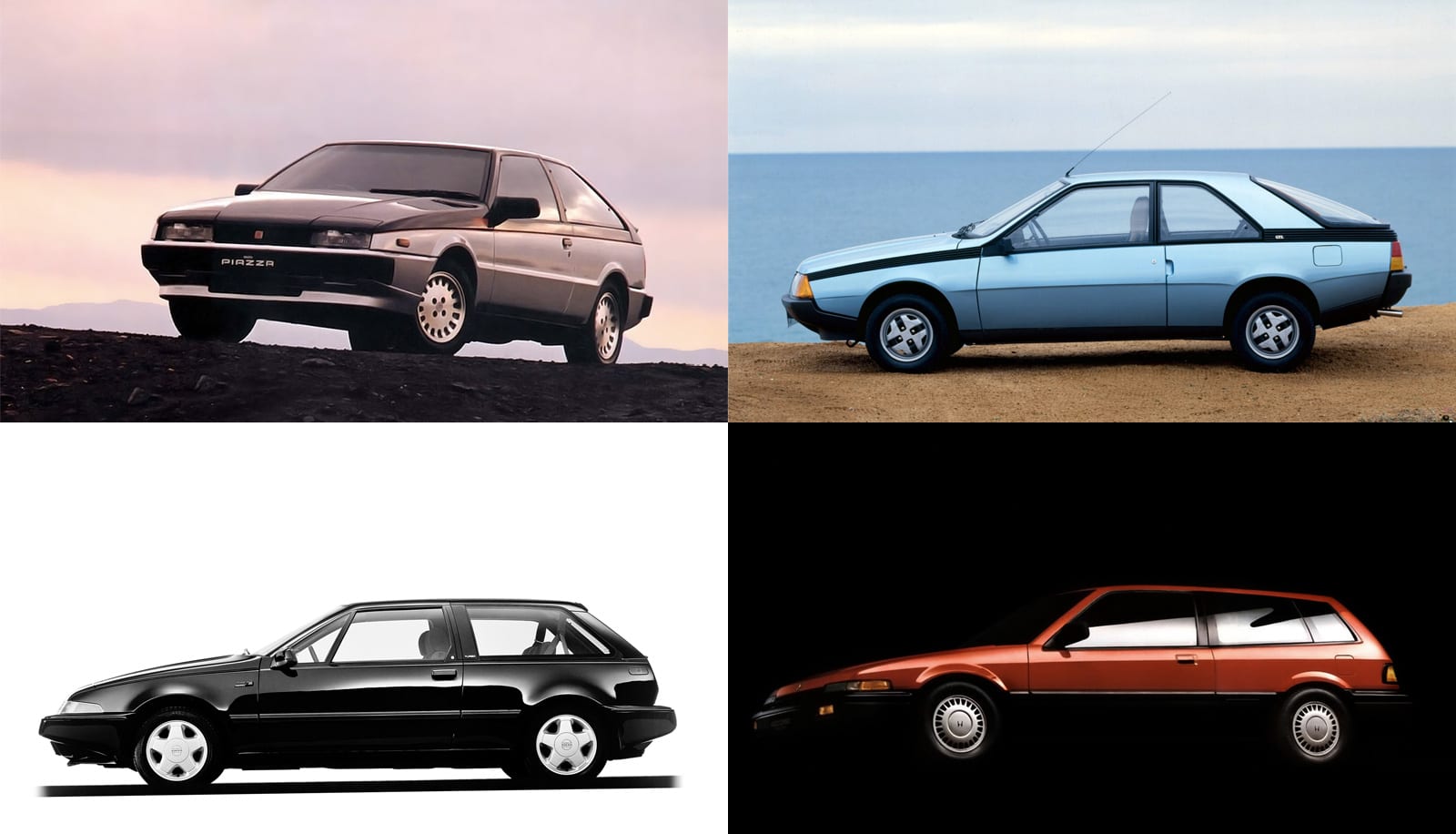Yesterday, we ran a piece in defence of the original Isuzu Piazza or Impulse, the model name depending of your market region. While the Piazza is relatively obscure by now, it’s not the only slightly oddball car in its class. For every Celica, Supra or 240SX, there are a bunch of weirder coupes that either didn’t do well and vanished almost completely, or did well and still vanished. I decided to assemble a comparison of four cars, including three other coupes vaguely in the same ballpark as the Piazza/Impulse, and instead of casting judgement myself, Twitter users would be the ones deciding which one would be the best pick.
Here’s the list of contenders. The first to be picked is the Honda (Accord) Aerodeck: a sort of a shooting brake variant of the mid-‘80s Accord. Three doors, pop-up headlights, hatchback, yet for some reason there’s more style than the other same generation three-door hatchback Accord variant with pop-ups had. In any case, it matches the Piazza/Impulse better than well.
In a similar style, there’s also the Volvo 480ES. This was the first front-wheel-drive car to wear Volvo badging, so its engineering is fundamentally different from the Isuzu that can trace its lineage to the Chevy Chevette. But it’s super-’80s, also features pop-up headlights, and comes with the “Failed but classy” tag that was affixed to it at an early point in its life due to electrical trouble and premature rust. The 480ES also had a turbocharged option, though the Renault-related engine palette is hilariously weaksauce: 1.7 non-turbo, 109 hp: 1.7 turbo, 120 hp (!), 2.0 non-turbo, 110hp (!!).
The final contender is the Renault Fuego. The 18-based coupe was also available with a turbo engine like the Isuzu and the Volvo, and like the Isuzu, it was available already in the early half of the 1980s, unlike the Honda and the Volvo. The daintily styled Fuegos were built in the hundreds of thousands, but it’s fair to say a large percentage of those didn’t make it to this side of the millennium thanks to various maladies. But it’s still a very pretty car.
The voting started interestingly, as the Isuzu pulled to an early lead, but the others caught it quite quickly, leaving it in third place and with the Renault trailing far behind. Earlier today, the Volvo had cemented its lead with the Honda taking a clear second place after 153 votes, but the Isuzu and Renault were neck to neck with just minutes left in the voting. Then, the last vote was cast, deciding in favor of the Isuzu, granting it 21% of the total votes and leaving the Renault last with a respectable 19%. The Honda took second place with 27% of the total votes, and the Volvo cruised to a comfortable win with a third of all the votes cast. It’s probably likely this is the first comparison test win the Volvo has claimed in a long time.
Here's some photos to help with the decision-making. pic.twitter.com/S8RmIdkfn8
— Antti ”Antti Gauchonen” Kautonen (@julkinen) June 26, 2019
What would I pick? The Honda is likely to be the most reliable, but rust has eaten up many of them. The Volvo has all of the rust, too, but less stellar reliability – but it can be considered the better-looking design of the two. The Isuzu also scores high on style, but the powertrain would probably drag it down, and the Renault, while comfy, can be the most brittle of the four. Naturally, the logical answer is to pick all of them, as they’re all still so unloved/unnoticed that it only takes new-ish commuter car money to decorate your garage with decent examples of each, instead of being the kind of boring dullard that spends all that money on just one car.
That brings us to an interesting closing question. Is there a market that got all of these cars at the same time? Finns did get the Honda, Volvo and Renault, but no Isuzu; U.S. buyers got the others but not the Volvo, despite earlier intentions of the manufacturer. Perhaps the sole market to cater for all these needs might have been the UK. If anyone knows, comment!


Leave a Reply